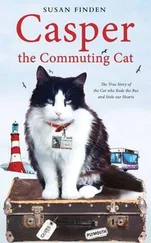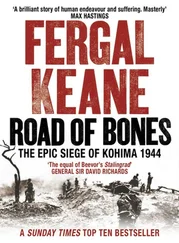If the models held true, Batt thought the first part of the race would be a joyride. The rush of air, like the current, would come from the north, providing a substantial but manageable tailwind. But it looked as though the intensifying storm would hit the fleet sometime after most of the yachts began crossing Bass Strait, the worst possible place to run into bad weather. When the fleet collided with the storm, Batt believed the wind would switch direction by something close to 180 degrees. The current and the waves would then be moving in opposite directions, a phenomenon that would have a dangerous multiplier effect on the waves. A one-knot contrary current can increase the average wave height by 20 percent, and two knots sometimes increases heights by 50 percent. Opposing currents also produce the kind of steep waves with high, arching backs that can damage even the sturdiest of vessels.
The main wild card was the course of polar jet streams. Predicting the exact course of jet streams, high-speed rivers of air that travel 30,000 feet above the earth’s surface and change direction as they collide with one another, is difficult. But while polar jet streams generally don’t extend far enough north to reach Bass Strait during the summer, satellite photographs of high-level cloud formations and weather-balloon observations suggested that one stream might do so during the race. A jet stream straddling the low would intensify it by setting off a dangerous chain reaction: the high-altitude wind would siphon the warm air out from the center of the low, further reducing the pressure at the core of the storm and speeding the rush of wind toward the low—and accelerating the system’s clockwise movement.
If it weren’t for the race, the meteorologists probably wouldn’t have thought about making a prediction at such an early stage. But aware of the problems that could ensue if a sporting event with a global following ran into unforecasted extreme weather, they leaned toward upgrading the gale warning to a “storm warning,” indicating that they believed winds would exceed forty-eight knots. After taking another look at the Australian computer output, Gage said, “If the model is right, and we go against it, it will look very bad for us.”
Everyone agreed, and at 2:14 P.M., a bit more than an hour after the race began, Peter Dundar, another bureau forecaster, sat in front of a computer terminal and clicked the cursor on an icon labeled WARNINGS to bring up a page containing the standard warning language. After he entered specific details about the weather conditions, he transmitted the alert by fax to Australia’s marine broadcast service as well as commercial radio and television stations, fishing boat owners, the Royal Australian Navy, rescue services, and the CYC, among others.
No one was more worried than Kenn Batt. More than a dozen of his friends were in the race, and he was so frightened for them that he felt physically ill. Sure that most of the yachtsmen had no idea what they were in for, all he could think about was how miserable he had been in the 1993 Hobart, the one in which only thirty-eight boats finished. He was convinced that this race would be much worse, so bad that some of his friends could die. With tears in his eyes, he told Gage, “It’s going to be a massacre.”
Gage and Batt had gone off-duty, but they stayed at the office to ring as many alarm bells as they could. Gage called Australian Search and Rescue, the government agency responsible for coordinating rescues of boats and planes at sea. “We have a priority storm warning,” Gage told Andrew Burden, an officer at the agency. “If it’s not as bad as this, I guess there’s no harm done apart from getting a few people off holidays, but if we don’t forecast it, we’re going to be in for an awful amount of criticism.”
A storm warning was the most serious warning the bureau could issue for the waters off southeastern Australia, though many of the Hobart competitors didn’t know this. Instead, they believed the most serious warning would be for a hurricane or a cyclone. But tropical cyclones, which are common in other parts of the South Pacific, do not occur off southeastern Australia because they develop only in places where the water temperature is twenty-seven degrees Celsius or higher. Different terminology didn’t mean this storm wouldn’t have the kind of wind speeds that tropical cyclones or hurricanes do, however.
The bureau also circumscribed the warning. Storm warnings are theoretically open-ended—indicating forecasted winds of anything more than forty-eight knots—but the bureau included an upper limit, predicting forty-five to fifty-five knots. The bureau’s forecasters would later claim that the forecast was for steady wind speeds and that sailors should have understood that gusts could exceed the predicted wind speed by as much as 40 percent. But although Hobart yachtsmen understood that gusts regularly exceed constant wind speeds, few had ever heard that gusts could be 40 percent greater. Others shrugged and decided that they wouldn’t worry until the forecast said something about a cyclone or a hurricane.
While sailors recognize that wind is their power supply, few have more than a superficial understanding of the complicated forces behind it or the vocabulary of meteorology. Indeed, many of the Hobart contestants believed that the gale warning the bureau issued before the start of the race was more severe than a storm warning, even though the opposite is true.
The real danger of strong winds is the waves they produce. After centuries of study, scientists still don’t fully understand waves, but they have developed formulas to estimate sea heights. Nine hours of fifty-knot wind across open ocean typically produces an average significant wave height (the average of the biggest third of all waves) of about thirty feet. But scientists also know that the patterns are regularly broken, particularly when there are strong currents and substantial variations in the depth of the sea. Sometimes, in ways that have yet to be fully understood, two or more wave crests combine, creating rogue waves, which are typically almost twice as large.
Patrick Sullivan, the director of the bureau’s operations in New South Wales and a meteorologist with four decades of experience, was so concerned by the storm warning that he interrupted his Christmas vacation to drive to the office. After looking at a sequence of satellite photographs for the previous twenty-four hours, he decided that the storm warning was a bold prediction, but entirely appropriate. Although there was no question that a low-pressure system would move up the coast, he knew it would take another twelve hours or so to know whether it would be the kind of intense low that would have a tightly wound cyclonic force. Still, given the race, he agreed that the warning was the right thing to do.
He thought the warning would cause many competitors to abandon the race. He was wrong.
BEFORE THE STARTING gun fired, Richard Winning was at the Winston Churchill ’s helm, smoking his pipe. While most yachts were jousting for position near the front of the line, Winning was surveying the scene from near the back of the fleet. The Churchill didn’t cross the line until more than a minute after the cannon was fired. Winning was less concerned about speed and where his boat placed than Larry Ellison or Kooky. “It will be gentlemen’s ocean racing,” he had told his crew.
Nineteen-year-old Matthew Rynan, a generation younger than almost everyone on the Churchill ’s crew, was disappointed. As much a kid as an adult, Rynan was a short and muscular spark plug who wore a single gold hoop through his right earlobe and a shark’s tooth around his neck. His puckish face seemed to carry a perpetual half smile. Before the race, his only real concern about the Churchill had been the age of its crewmen. Winning’s unaggressive start made him even more aware of how different he was from the rest of the crew. Come on, old man,
Читать дальше












